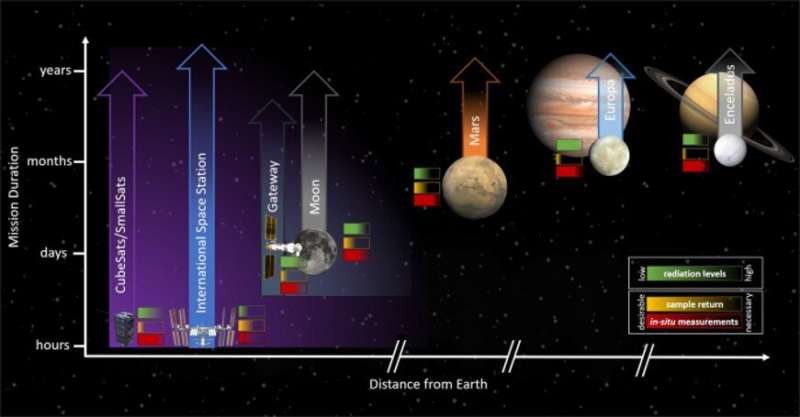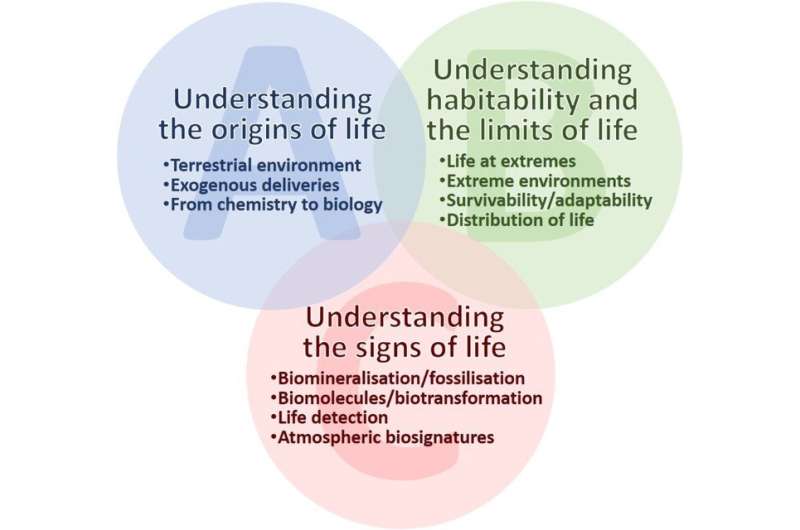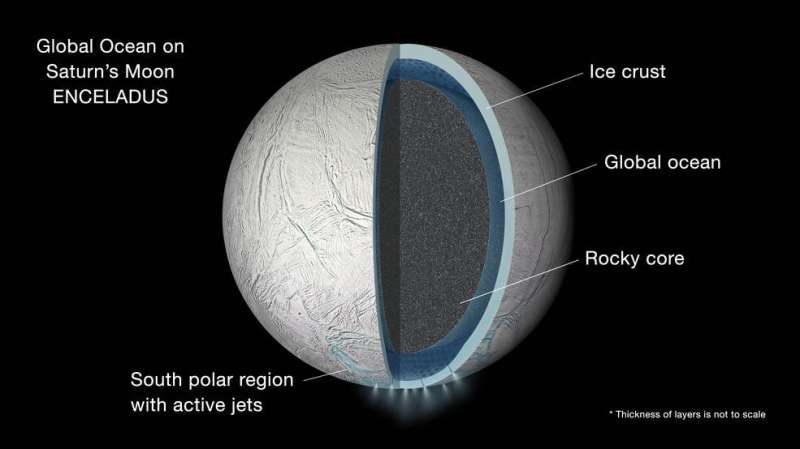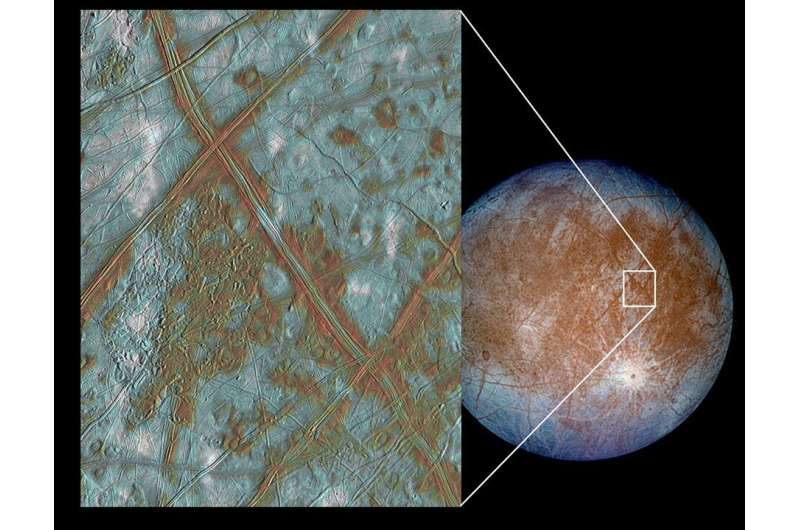June 29, 2023 feature
This article has been reviewed according to Science X's editorial process and policies. Editors have highlighted the following attributes while ensuring the content's credibility:
fact-checked
peer-reviewed publication
trusted source
proofread
Developing future space experiment platforms for astrobiology and astrochemistry

Although technically challenging, space experiments are a scientifically important aspect of astrobiology and astrochemistry investigations. The international space station (ISS) offers an excellent example of a long-term research platform orbiting the Earth, with highly successful advances to implement experiments in space, which has contributed to a wealth of scientific data in the past few decades. Future space platforms present additional opportunities for experiments in astrobiology and astrochemistry.
In a new report, now published in npj Microgravity, Andreas Elsaesser and a team of international, interdisciplinary scientists in physics, biology and astrobiology, the NASA Ames Research center and the German Aerospace Center examined a few key topics. These analyses included the European Space Agency (ESA) Topical Team Astrobiology and Astrochemistry community key themes, summarized by the "ESA Scispace Science Community" white paper.
The researchers emphasized recommendations to develop and implement future experiments and filled in gaps in knowledge and advance scientific concepts for future space-exposure platforms currently in development at an advanced stage of planning. Aside from the ISS, research platforms also include CubeSats and SmallSats and the Lunar orbital gateway. This work highlighted in situ experiments conducted on the moon and Mars to support the search for exoplanets and extraterrestrial biosignatures within and beyond the solar system.
The fundamentals of space exploration
Approximately two decades of experiments on the International Space Station have provided researchers with evolving insights to establish a long-lasting impact on life sciences. The fields of astrobiology and astrochemistry are fundamental to exploring the origin of life on Earth and understanding the presence of life within this universe, while exploring and colonizing extraterrestrial planets. Although in-lab facilities can simulate space environments, it is challenging to faithfully replicate such environments on land. The ISS and other satellites provide an excellent platform to conduct irradiation experiments beyond Earth's atmosphere. The navigational capacity of the platform relies on machine learning algorithms and artificial intelligence for on-the-fly repair of hardware.

The astrobiology and astrochemistry science community in Europe developed an up-to-date scientific roadmap in 2020 for use on current and future space platforms. To identify the best use of space platforms, they explored several top science objectives to highlight the interdisciplinarity of this field. The preliminary themes included:
- (A) Understanding the origins of life
- (B) Exploring the habitability of the limits of life, and
- (C) Understanding the signs of life
The origins of life
Elsaesser and colleagues discussed the origins of life on Earth in the context of a comprehensive analysis to understand our search for life beyond this planet. Earth's environment maintains a stable surface liquid, presently unique to the solar system, although this was not always the case. During the origin of life on Earth, the environment was likely similar to early rocky planets such as Mars and Venus. Subsurface liquid water is also present on the icy moons of Jupiter's Europa and Saturn's Enceladus, which resemble subglacial Antarctic lakes found on Earth, making them exciting candidates in the search for life.
Much of the organic matter of Earth's environment is also known to have originated from meteorites and micrometeorites that arose from carbonaceous asteroids and comets, paving investigational pathways to explore the journey of such objects before they reached Earth. The team highlighted the origin of life relative to abiogenesis, to transition from a purely chemical to a molecular prebiotic phase to arrive at a living replicative system.

The signs and limits of life
The team further explored the habitability and the limits of life to adapt to extreme and improbable environment on early Earth. They explored the signs of life biosignatures in and beyond this solar system by focusing on cells, biochemical molecules and biomediated structures. They explored environmental transformations underlying missions that search for evidence of life from extraterrestrial species returned to Earth. They formed methods to explore beyond the solar system and simulate potential exoplanetary conditions to decode spectral signatures to understand, and interpret their formation and evolution.
This work explored themes supporting the search for extant life, while identifying the presence of key molecules such as amino acids, lipids, and carbohydrates as well as Earth organism-specific constituents such as sterols, quinones and porphyrins.
Experiments in space
Elsaesser and the team showed how space provides a unique environment to perform astrobiology and astrochemistry experiments. Planned explorations can support the search for signs of life on extraterrestrial bodies such as Mars by uncovering biomineralization and fossilization processes via diverse ground-based experiments. The distance and duration of satellite platforms to Earth supported these avenues by ensuring that the samples correlated with the type and amount of radiation and microgravity exposure to accomplish successful sample return. The team also noted how certain low Earth orbits or experiments on the moon and Mars allowed access to higher fluxes of high-energy photons, cosmic rays and solar energies compared to the terrestrial environment.
They examined the optimal timeframe of a mission to assess the productivity of the experiments. For best outcomes, space satellite lifetimes are required to last for decades. However, SmallSats, and CubeSats are currently challenging this assumption as short-term exposure experiments. It appears that miniaturizing the existing technology can lead to successful mission outcomes.

Core concepts and experimental strategies
The researchers further explored the mode of operation of space satellites—with a primary focus on sample-return experiments, and the potential to conduct sample analyses with quantitative PCR, high throughput sequencing and subcellular microscopic techniques.
The ISS remains a fundamental exposure platform for long-term and short-term experiments, with the capacity for sample return. The team also discussed the possibilities of repurposing additional platforms to host multiple experiments.
Outlook
These are exciting times for space exploration and space sciences with unprecedented levels of missions implemented and underway to accomplish space-exposure platforms. Andreas Elsaesser and colleagues discussed the possibilities of performing complex scientific experiments by using artificial intelligence, machine learning and robotics tools to ask and answer key questions in the fields of astrobiology and astrochemistry.
The work aims to explore the origin of life and biosignatures on Earth, beyond Earth at an interplanetary level, as well as within the solar system, and within the rapidly expanding field of exoplanetary science.
More information: Andreas Elsaesser et al, Future space experiment platforms for astrobiology and astrochemistry research, npj Microgravity (2023). DOI: 10.1038/s41526-023-00292-1
Alexandra Witze, Space-station science ramps up, Nature (2014). DOI: 10.1038/510196a
Journal information: Nature
© 2023 Science X Network





















